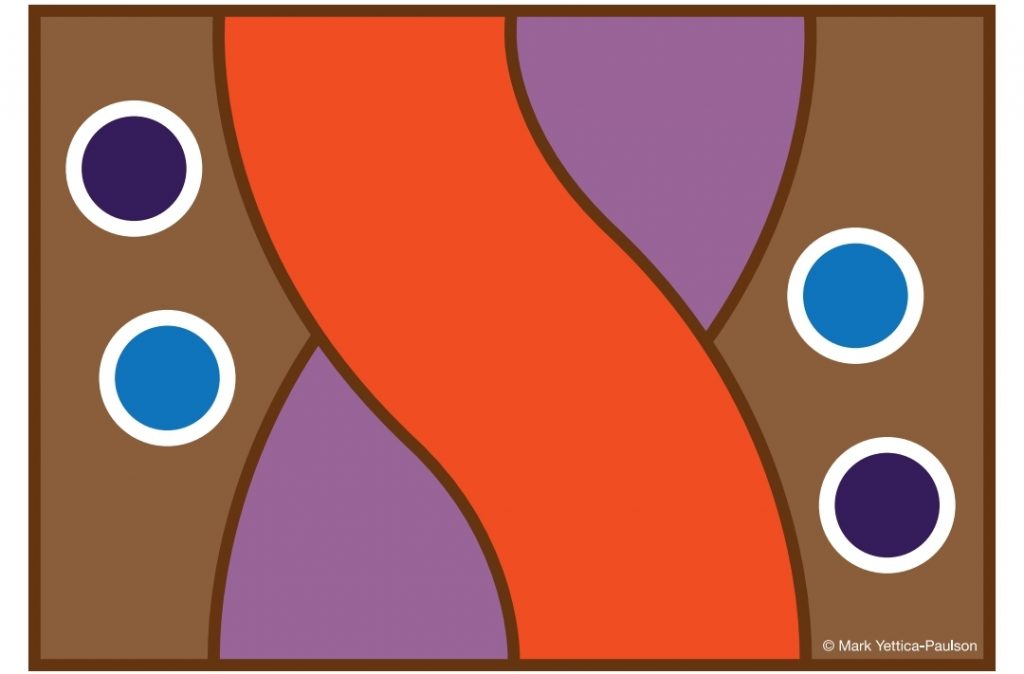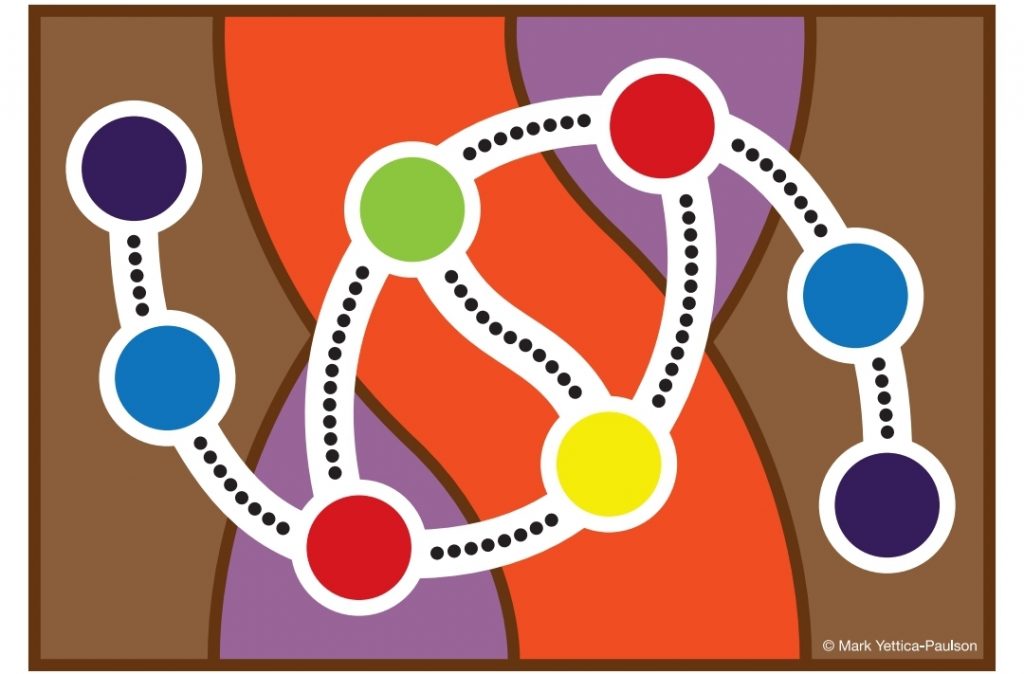“The Blue Space serves to gather people together to participate in activities to strengthen identity and belonging. The intent and purpose of this space is to activate cultural expression and affirm distinctiveness.” – Mark Yettica-Paulson
We’ve created some simple formats for each space on Mark’s Inter Cultural Framework (ICF) to help readers gain a general understanding of how the framework works and how it can applied to any industry, community and organisation. This blog post expands on the Blue Space of Cultural Practice. Scroll to the end for the full ICF artwork.
Make sure you read our earlier posts, where Mark explains The Backgrounds:The Light Purple Riverbanks, The Brown Land and the Ochre Riverbed and The Deep Purple Space of Deep Cultural Memory.
Traditions and practices in the Blue Space
- We all have traditions and practices that are part of our upbringing, lifestyle and culture. These are the activities, ceremonies and events that you participate in because it’s who you are and what you do. These activities make us feel part of our cultural group.
- These activities, ceremonies and events are important to us. We like to be part of them or we feel obliged to participate. Some cultures are very well defined in their cultural practices and traditions. Others are not as articulate in their understanding of cultural practice and traditions however, it is clear that they have a pattern of doing things that are acceptable within their communities.
- Some of these traditions will be formal and carry a strong sense of occasion, like festivals, weddings and funerals. They instil a sense of identity and belonging. Others are less formal and feel “natural” or “seamless” in our everyday lifestyle, for example, when you prepare to go to someone’s home for dinner or a birthday party, it is natural and common practice to bring a pot of food and drinks to share.
Open and closed spaces in the Blue Space
- Some of our cultural traditions and practices are open for everyone and some are closed. Sometimes we want to share our cultural traditions, events and stories more broadly to anyone interested. An example is a cultural event in public spaces where it’s a “showcase” and all are welcome. There are other times that we do not want to share it broadly, but rather we prefer to have our cultural traditions and practices only for certain people. This is an important distinction. Not everyone is welcome in every space. Not everyone is suitable for every space. Not every space is the right fit for everyone.
When First Nations people in Australia celebrate NAIDOC week it is a celebration for all Australians to share. It is an opportunity for Australia to showcase, honour and celebrate the cultures of the First Nations. It is a week for the First Nations to strengthen identity and belonging through community events that are open to the Australian public. This is an example of an Open Gate Blue Space. It delivers on its purpose to strengthen identity and belonging, but is also open for others to participate, learn and share.
- Some cultural traditions and practices are closed and are restricted to those who have the credentials to be there. This is more than simply holding a purchased ticket. This is about whether you have the right to be there. Weddings and funerals are examples of closed spaces that most can relate to. Another example, is the Pacific Women’s Weaving Circle, an informal space where women from the Pacific Islands can come and share their time and knowledge with other Pacific women and practice the art of weaving. This gathering is an important space for cultural and emotional nurturing. It is designed to provide safety and support as well as cultural sharing for women. It delivers on its purpose to provide opportunities that strengthen identity and belonging, but it is not open to the public. It is designed to be a space where Pasifika Women can come together and weave.
Strengthening Identity in the Blue Space
- Participating in these cultural practices and traditions defines who we are. It strengthens our sense of identity and belonging.
- We all have cultural traditions, practices and ceremonies. Some are easy to identify and name and others are not. It is important to remember that even though a cultural practice might take time to identify and articulate, it does not mean it doesn’t exist. Exploring, articulating and identifying cultural practises in this blue space will help strengthen our identity.
In the context of working inter-culturally with First Nations and other Australians it is important work to identify the cultural traditions and practices that we each carry with us. This fundamental principle is connected to other ideas of Unconscious Bias and Cultural Intelligence.
Read the next space in the ICF, the Red Teaching Space.
Peace,
Mark Yettica-Paulson.






